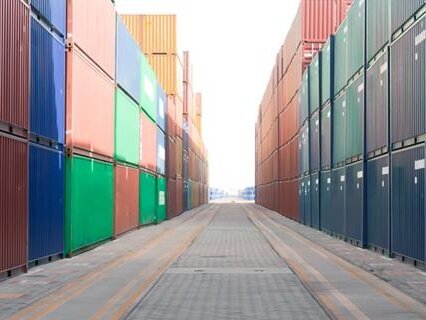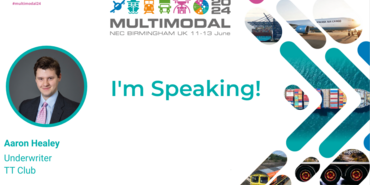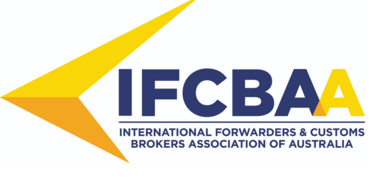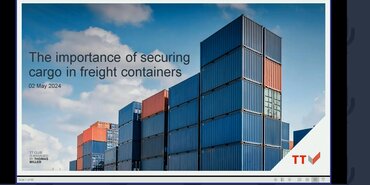Quay container crane risks: loss prevention insights from TT Club and Brookes Bell
The TT Club and Brookes Bell recently hosted a webinar on terminal risks, focusing particularly on quay container cranes. Moderated by Mike Yarwood, Managing Director of Loss Prevention at TT Club, the session featured Laurence Jones, Risk Assessment Director at TT Club, and Ray Luukas, Chairman and Chief Technical Officer at Brookes Bell, who shared valuable insights on risk mitigation and incident investigation.
Quay container crane claims analysis
Laurence Jones presented TT Club's claims analysis data covering 2017-2021. The analysis revealed that wharf or quay crane claims are the single largest insurance cost for ports and terminals, accounting for 18% of claim costs. Other significant risks include heavy rain/flood (14%), fire (12%), truck and vehicle accidents (10%), and lift truck accidents (7%).
For quay crane claims specifically, the main causes were:
- Other collisions (30%)
- Stack collisions (19%)
- Weight, twist lock, cell guide issues (18%)
- Quay crane boom to ship collisions (13%)
- Twin 20 issues (11%)
- Other spreader hoist issues (7%)
- Wind cranes (4.4%)
- Crane collapses (0.3%)
Technology solutions for risk mitigation
Jones emphasised that 80% of quay crane accidents could be prevented with better procedures and technology. He recommended several preventative measures:
- Anti-collision systems: For gantry collisions, companies like LASE, Sick, Arck, Konecranes, ABB, and Siemens offer solutions.
- Stack profiling systems: Using sensors and control logic to prevent stack collisions, costing around $30,000 per crane.
- Twist lock load sensing: To detect eccentrically loaded containers, prevent lifting if not all twist locks are engaged, and measure container weight.
- Boom anti-collision systems: Electronic systems using laser sensors to prevent costly boom-to-ship collisions that can cost up to $8 million in repairs and business interruption.
- Twin 20 detection: Laser sensors to detect and prevent lifting two 20-foot containers in 40-foot mode.
- Wind protection measures: Storm pins and tie-downs for all quay cranes, regardless of location, to protect against increasingly severe windstorms.
- Structural inspections: Annual inspections by qualified structural engineers to prevent boom collapses.
Incident investigation process
Ray Luukas shared Brookes Bell's approach to investigating crane failures, which includes:
- Initial review of reports and CCTV footage
- Preservation of evidence
- Joint surveys at inspections and non-destructive testing (NDT)
- Working with service engineers and contractors
- Reaching without prejudice agreements on damage extent and pre-existing defects
- Examining factors such as overload devices and limit switches
Case studies of crane incidents
Luukas presented several case studies:
- Ship-to-crane collision: A vessel struck the waterside leg of a gantry crane, requiring in-situ repairs costing £3 million.
- Milano Bridge incident: A container ship collided with multiple cranes in Busan, Korea, completely destroying one crane and damaging several others at a cost of $6 million plus two total losses.
- Software conflict incident: A wide-span gantry crane experienced failure when its legs lost synchronisation due to a software upgrade conflict, causing one leg to speed up while the other slowed down.
- Snag load collapse: An older incident where a snagged container caused an entire gantry crane to collapse, seriously injuring the driver.
- Crane fire: A mobile crane caught fire when a service engineer mishandled it, causing a turbocharger explosion that ignited oil in the engine compartment.
- Wire failure: A case where a special type of Casarwire with a plastic sleeve around the inner strands failed due to corrosion of the inner strands that could not be properly lubricated.
Advanced investigation and prevention tools
Luukas highlighted several tools used for both investigation and preventative maintenance:
- Computer modelling and simulators: For accident reconstruction, port design, and risk assessment.
- Finite element analysis: To identify high-stress points in structures for focused inspections.
- Metallurgy: Laboratory analysis of failed components to determine failure modes.
- Advanced NDT: Including electromagnetic methods for scanning wire ropes and structures to detect defects and measure steel thickness.
Conclusion
Both speakers emphasised the importance of proactive risk management. Jones urged terminals to adopt available technologies despite the cost, noting that insurance doesn't cover all losses, particularly human cost. Luukas highlighted that ship-to-crane collisions remain common, with factors like increasing vessel size, stern and bow flare, and climate change potentially worsening the risks.
Mike Yarwood concluded by acknowledging the value of preventative maintenance technologies, with Luukas confirming increased adoption of these tools, particularly electromagnetic technology that offers 100% coverage rather than spot checks, requires no surface preparation, and provides immediate digital reporting.
Documents
Port and terminal risks - quay container cranes - slides (7.42 MB) 14/06/2022
- Author
- Mike Yarwood
- Date
- 24/05/2022





